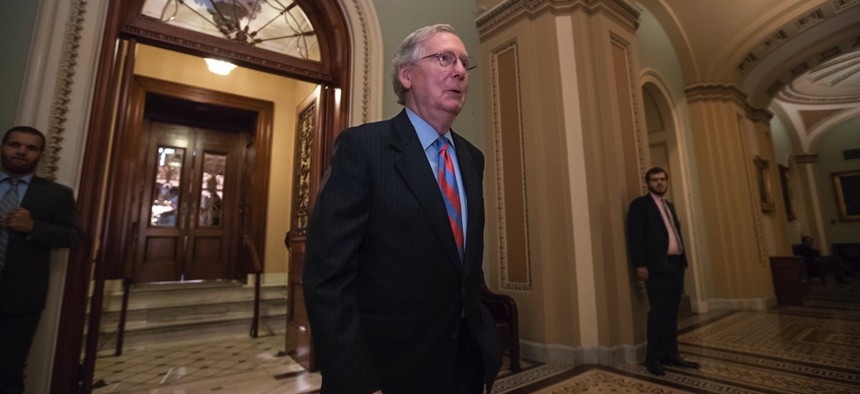Public Health Has Dodged a Bullet

Senate Majority Leader Mitch McConnell, who led the effort to pass the "skinny bill." (AP Photo/J. Scott Applewhite)
Funding to fight lead poisoning, opioid addiction, and chronic disease could have vanished with the “skinny repeal” of the ACA.
With Republicans’ latest attempt to repeal the Affordable Care Act defeated in the wee hours of Friday morning, millions of Americans are breathing a sigh of relief.
Based on the reported content of the so-called “skinny repeal”— introduced mere hours before last night’s vote—the Congressional Budget Office estimated the bill would have increased the number of uninsured Americans by 16 million by 2026.
Unlike previous repeal-and-replace attempts, this bill did nothing to directly undo the Affordable Care Act’s historic expansion of Medicaid. But between those unable to afford what would have been price-hiked ACA marketplace plans, and millions left uncovered by their jobs once the employer mandate disappeared, “the skinny bill as policy is a disaster,” the Republican Senator Lindsey Graham said at a press conference on Thursday. (He then proceeded to vote “yes.”)
Besides stranding countless individuals, the bill would have left ailing urban communities high and dry. Established by the Affordable Care Act, the Prevention and Public Health Fund appropriated nearly $1 billion last year to stem chronic disease, prevent infectious outbreaks, and promote health equity, largely through research, grants, and programs orchestrated by the CDC. This fund, set to double by 2022, would have been repealed by 2019. Every corner of the country would have felt some impact, with states losing up to $3 billion over the next five years.
Cities would have felt the greatest impact, though, with their concentrated health inequities and closely-quartered populations. Here’s some of what could have been lost with the PPHF:
- The CDC spent $13 million on lead prevention programs nationwide in 2016. Houston, Los Angeles, Washington, D.C., Chicago, New York, and Philadelphia have all recently received millions to monitor lead poisoning risks, educate communities, and manage treatment.
- Another $40 million bolstered the CDC’s Epidemiology and Laboratory Capacity program, which distributes money to cities and states for research on infectious diseases like Ebola and Zika. Miami is surely grateful.
- The CDC distributed another $160 million of PPHF dollars to Preventive Health and Health Services Block Grants, which support localized solutions to community health challenges. Think text-based health alerts in California, bike paths in Connecticut, and farmers markets in rural Kansas.
- The CDC dishes out nearly $51 million per year to a longstanding, remarkable program called Racial and Ethnic Approaches to Community Health. Rooted in neighborhoods from the West Bronx, to suburban Detroit, to South L.A., some 49 REACH non-profits around the country connect minority communities with high health risks to care and prevention services.
By healing communities outside the costly strictures of the doctor’s office, preventive care programs like these aim to stretch healthcare dollars further. As with so many kinds of federal funding cuts—including those to Planned Parenthood, also proposed by the “skinny repeal”—low-income Americans, who are disproportionately black and brown, stand to lose most. For now, with the years-long Republican effort to kill the ACA dead, they won’t.
But the fight to protect public health programs isn’t over. Republicans will soon turn to passing a budget, guided by the blueprint released by the White House earlier this year. In addition to cuts to the FDA, the NIH, Medicaid, and Planned Parenthood, it called for to slash the CDC’s budget by $1.3 billion, which could encompass AIDS research, opioid addiction interventions, and programs to fight diabetes, heart disease, and obesity.
Laura Bliss is a staff writer for CityLab, where this article was originally published.
NEXT STORY: Commentary: America’s Juvenile Justice System Is Appropriately Balanced





